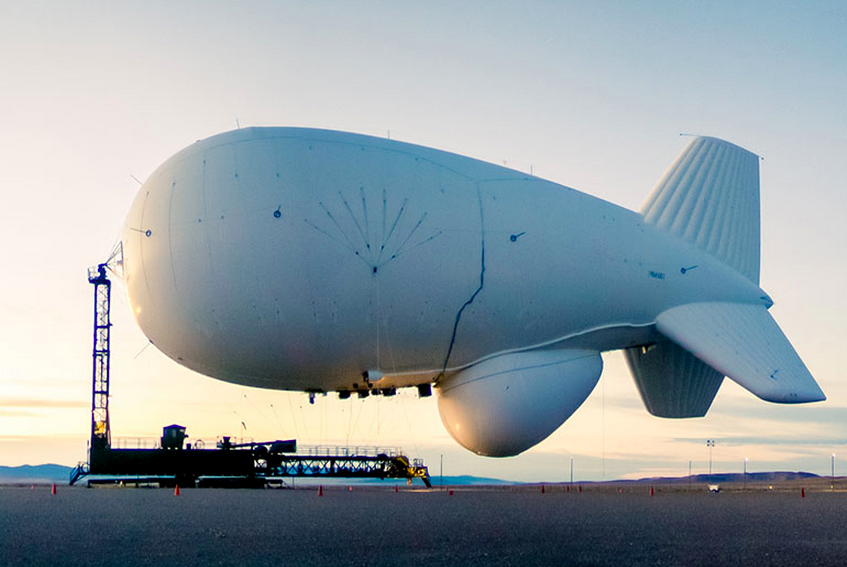News & Community
It’s a Bird, It’s a Plane, No It’s the Aberdeen Blimp
The giant defense sensor has made many curious and spawned Twitter parody accounts.
Captain Jim was curious like the rest of us.
“I’m wondering what is up in the air!” Harford County councilman Jim McMahan, an Army veteran and former local radio host, said a month into a military project that sent a 250-foot blimp-like figure into the sky above Aberdeen Proving Ground. Weather permitting, it has hovered there at 10,000 feet for the last eight months.
People asking the same question have nearly gotten into car accidents on I-895 while staring at the sky. Or they’ve snapped pictures from passing aircraft, Camden Yards, or their back porch. In the modern judge of a topic’s newsworthiness, a pair of social media parody accounts, @BmoreBlimp and @AberdeenBlimp, also sprouted though it’s technically not a blimp, but something three-times larger called an aerostat.
The mission? Quite serious, according to government and military officials: to keep an eye out for cruise missiles entering the range of Washington, D.C., and up to 340 miles away, all the way to Boston. The billion-dollar Joint Land Attack Cruise Missile Defense Elevated Netted Sensor (JLENS) project is scheduled for a three-year run.
Part II is set for Friday. A second, also unmanned aerostat will be raised in the sky from a mooring station below, and fly five nautical miles from the one you already see, says Maj. Katrina Andrews, an Air Force spokesperson. Same mission, primarily “protecting the President and our Capitol,” she says.
One will focus on a 360-degree scan and the second will be used to focus on objects if they are detected. If all works, the radar data can be integrated into the already existing North American Aerospace Defense Command (NORAD) system. With several minutes of lead time, decisions can then be made to bring down an inbound missile.
But naturally, in an era of ever-present privacy concerns, critics have asked if JLENS is looking strictly for cruise missiles, which fly at low altitudes. That’s what McMahan was referring to when he sought more information. Having been briefed that the project was happening, he now wanted to know the full capabilities of the blimps, which the Army had tested the previous three years in the skies above Utah.
McMahan and other council members attended what he called a fully transparent briefing at Bolling Air Force Base in D.C. in the spring. Officials assured “there are no cameras looking down at anybody.”
Just don’t tell the unofficial account of the Baltimore Blimp that, though.
I see you.
— Baltimore Blimp (@BmoreBlimp) August 3, 2015
If it is, Maj. Andrews isn’t in on the scheme. Does the aerostat look down at people walking around, driving, or fiddling on their phones? “No, it doesn’t,” she said.
But the system does pay attention to some of the close surroundings. Part of the reason Aberdeen Proving Ground was chosen as a location for the project, McMahan said, was that a no-fly zone already existed above it, but that there was enough other air traffic nearby that the radar could be successfully tested. The aircrafts can also look down at water and ground traffic, if equipped, but officials stress that’s not the case.
“There are no cameras or video equipment onboard the JLENS system. Its radars cannot detect people,” Army Capt. Matt Villa, JLENS plans and coordination officer, said the day the first aircraft went up.
Raytheon, a major American defense contractor, manufactures the JLENS aerostats, and many more used by the military for various purposes in places like Iraq and Afghanistan. They’ll only come down for maintenance and bad weather, although Baltimore’s version has taken multiple lightning strikes and survived, Andrews said.
Families on I-95 passing through on August vacation may think it’s just a blimp on its way to M&T Bank Stadium for a Ravens game. But locals know better. At least we know what it is, we think, just in time for No. 2’s arrival.
